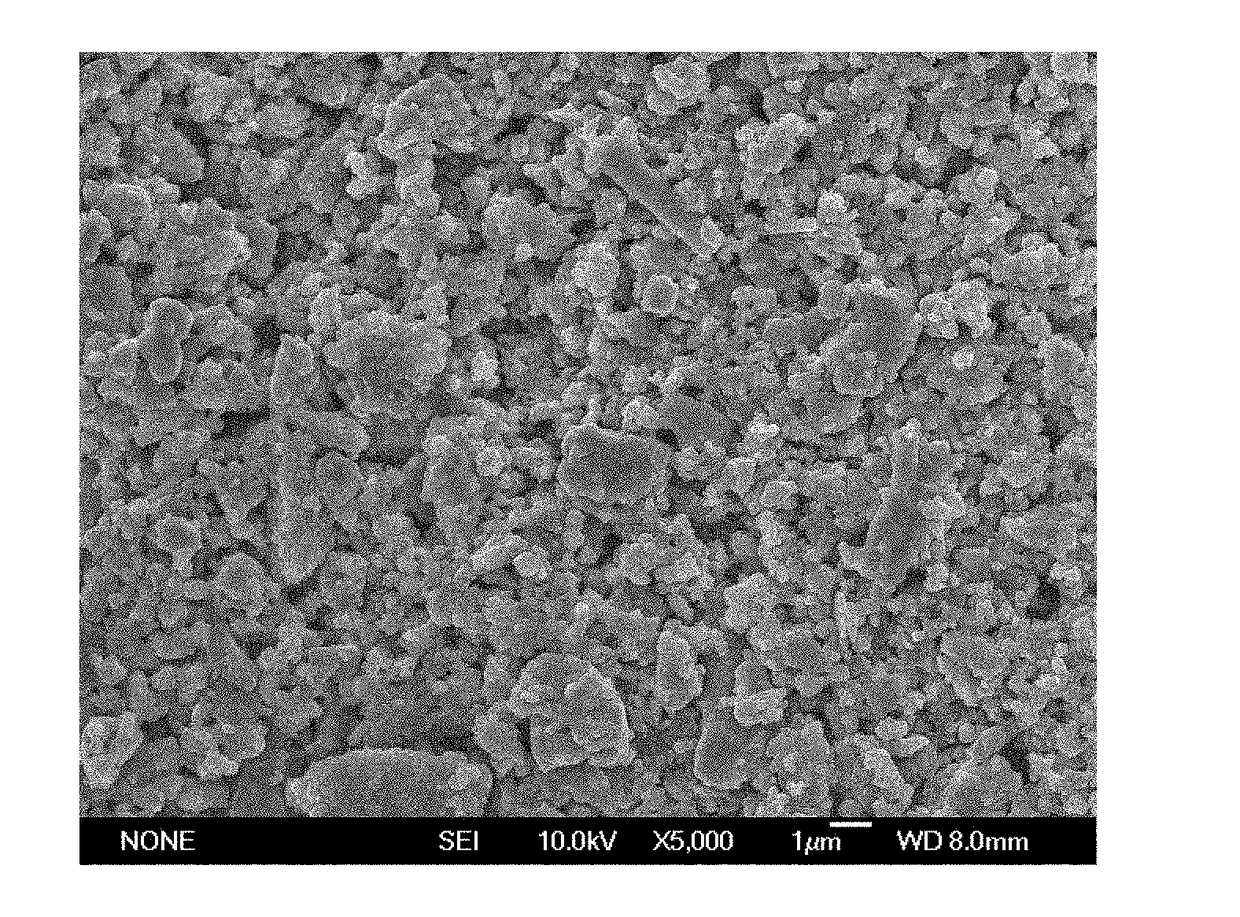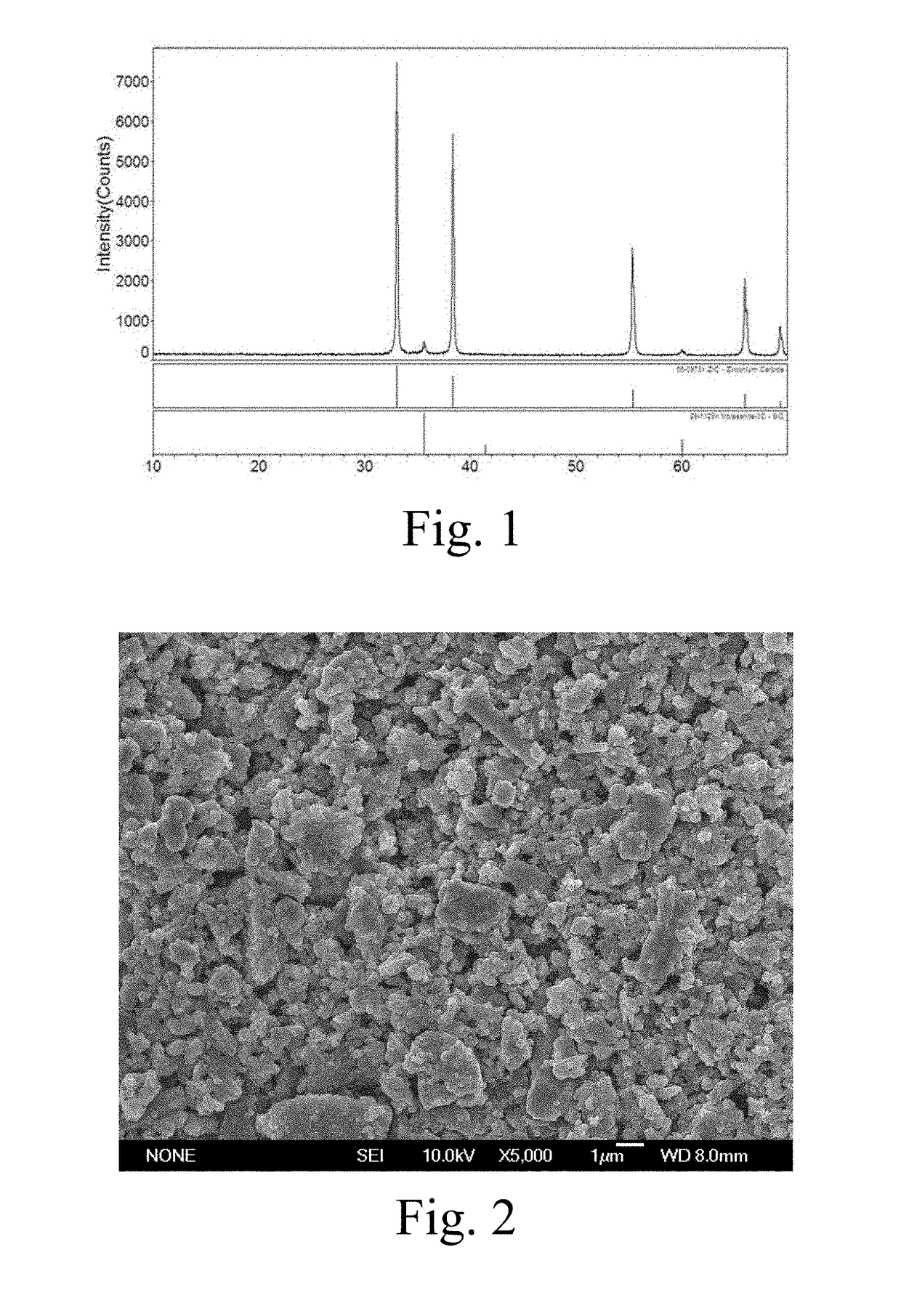Method for synthesizing high-purity ultrafine ZrC-SiC composite powder
- Summary
- Abstract
- Description
- Claims
- Application Information
AI Technical Summary
Benefits of technology
Problems solved by technology
Method used
Image
Examples
example 1
[0046]Synthesis of 50 mol % ZrC-50 mol % SiC Composite Powder
[0047]Accurately weigh 200 g of zirconium silicate powder and 249 g of sucrose, i.e., (Zr+Si):C=1:4, to be added to 150 ml of deionized water, add 3 ml ammonium acrylate of dispersing agent, mixedly grind for 12 hours in a roller mill to obtain aqueous slurries with a good suspension stability; add 30 g of acrylamide monomer and 1.5 g of N,N′-methylene diacrylamide cross-linking agent, continue mixed grinding for 1 hour and pour into a beaker, add 2 ml initiator of ammonium persulfate aqueous solution with a concentration of 10 % drop by drop, then add 1.5 ml catalyst of tetramethylethylenediamine aqueous solution with a concentration of 50% drop by drop, stir uniformly and wait for 3 min to gel solidify at the home position; mash the wet gel into blocks, send the blocks to an oven to dry for 16 hours, then increase a temperature to 220° C. to pretreat for 8 hours, send pretreated gel to a graphite crucible, heat with a ca...
example 2
[0048]Synthesis of 75 mol % ZrC-25 mol % SiC Composite Powder
[0049]Accurately weigh 1833 g of zirconium silicate powder, 2464 g of zirconium oxide fine powder and 3993 g of sucrose, i.e., (Zr:Si:C=0.75:0.25:3.5), to be added to 2000 ml of deionized water, add 60 ml ammonium acrylate of dispersing agent, mixedly grind for 12 hours in a roller mill to obtain aqueous slurries with a good suspension stability; add 200 g of acrylamide monomer and 15 g of N,N′-methylene diacrylamide cross-linking agent, continue mixed grinding for 1 hour and pour into an enamel pot, add 15 ml of oxidant and reductant aqueous solution (ammonium persulfate:ammonium bisulfate=1.5:1), stir uniformly and wait for 5 min and the aqueous slurries gel solidify at the home position; cut the wet gel into thick sheet with a thickness equal to or below 3 mm by a zirconium-silicate ceramics knife, send to an oven to dry for 12 hours at 120° C., then increase a temperature to 180° C. to pretreat for 24 hours, send pretr...
example 3
[0051]Synthesis of 90 mol % ZrC-10 mol % SiC Composite Powder
[0052]Accurately weigh 183.3 g of zirconium silicate fine powder and 1200 g of glucose, add 1600 g of silica sol, wherein Si:Zr:C=0.9:0.1:4, mixedly grind for 8 hours in a roller mill to obtain aqueous slurries with a good suspension stability; add 150 g of acrylamide monomer and 6 g of N,N′-methylene diacrylamide cross-linking agent, continue mixed grinding for 2 hours and pour into a enamel basin, add 10 ml of azobis(isobutylamidine hydrochloride) with a concentration of 5%, stir uniformly and keep temperature in a water bath of 70° C. for 5 min to gel solidify the aqueous slurries at the home position; mash the wet gel into blocks, send the blocks to an oven at 100° C. to dry for 16 hours, then increase a temperature to 200° C. to pre-treat for 10 hours, send pretreated gel to a graphite crucible, heat with a carbon-pipe heating furnace under protection of argon, increase the temperature to 1450° C. for 2 hours for a ca...
PUM
| Property | Measurement | Unit |
|---|---|---|
| Temperature | aaaaa | aaaaa |
| Temperature | aaaaa | aaaaa |
| Temperature | aaaaa | aaaaa |
Abstract
Description
Claims
Application Information
 Login to View More
Login to View More - R&D
- Intellectual Property
- Life Sciences
- Materials
- Tech Scout
- Unparalleled Data Quality
- Higher Quality Content
- 60% Fewer Hallucinations
Browse by: Latest US Patents, China's latest patents, Technical Efficacy Thesaurus, Application Domain, Technology Topic, Popular Technical Reports.
© 2025 PatSnap. All rights reserved.Legal|Privacy policy|Modern Slavery Act Transparency Statement|Sitemap|About US| Contact US: help@patsnap.com


